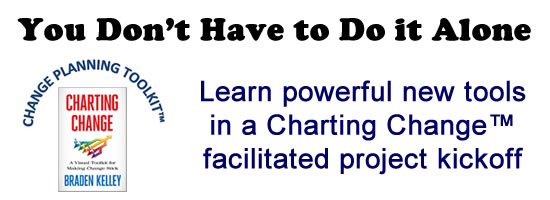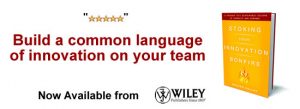Mobilizing People’s Creative Energy
 What if there is a way to create coherence, align people’s hearts & minds as well as build an environment that generates learning & results in organizational re-organisation & transformation?
What if there is a way to create coherence, align people’s hearts & minds as well as build an environment that generates learning & results in organizational re-organisation & transformation?
At ImagineNation™ we know that this can be done by transforming people’s cognitive dissonance into the vibrant & creative energy that makes innovation happen.
Just think about how much easier it will be if innovation lead change strategies are designed, articulated, received & executed by people in the VUCA times of our Digital Age.
An innovation lead change strategy in organizations often begins with a clear reason why innovation is important. This is often communicated as a passionate purpose, aimed at aligning an organization, team or individual with a clear reason as to why the change is so important. It also typically includes a vision, encapsulating a vivid picture to describe what it wants to be – in the form of the desired outcome from the valuable investments in executing an innovation led change strategy.
Disrupting business as usual
This disrupts people from their “business as usual malaise†as it most likely represents a very different picture to what the present state, or current reality may look & feel like. As it creates unconscious cognitive dissonance, within people, as to what this might really mean, as well as to how people connect to it & whether they can identify with it, or not.
As many of us are aware, the space between the present state & the desired outcome is the space that cognitive dissonance lives. Because, it is where people’s neurological, emotional, visceral & cognitive challenges to the massive changes innovation causes & brings, thrive, & if not dealt with effectively, will sabotage any innovation led change efforts.
“cognitive dissonance is the mental discomfort (psychological stress) experienced by a person who simultaneously holds two or more contradictory beliefs, ideas, or valuesâ€.
How cognitive dissonance affects people
Cognitive dissonance affects peoples’ autonomic nervous system, which operates largely automatically & outside of their conscious control.
It impacts on their whole being – physically emotionally & cognitively.
People in organizations who are already feeling overwhelmed by the constantly fast changing VUCA business environment, will often collapse into a set of “un-resourceful†states. We are all familiar with people who appear to be “frozen†or paralyzed, apathetic & unmotivated when more changes are introduced. Alternately, people may collapse into “un-resourceful†states of high anxiety & become immobilized by their unconscious fears.
No matter which response dominates, both tend to create, in the work environment, conflict, discomfort & tension.
Largely because of the invisible & unconscious disconnection that occurs between what is happening, or may happen in the future state when the purpose & the vision are achieved, & what each person holds to be true & real for them.
The passionate purpose & vision for the future, may have been clearly defined & articulated, within a safe & trusted environment. For people to understand, make meaning of & align to the desired future states, the organization needs to ensure that their change led innovation plan is designed upfront to, holistically & systemically:
- Resonate with people’s core values & beliefs,
- Honour who people are, their core identities,
- Support people’s inherent need for self-preservation.
Why is this important?
When these key elements are not included as a crucial, critical success factor in the design & execution of the change led innovation strategy, people become psychologically uncomfortable, anxious, confused & conflicted:
“This discomfort is triggered by a situation in which a belief of a person clashes with new evidence perceived by that person. When confronted with facts that contradict personal beliefs, ideals, and values, people will find a way to resolve the contradiction in order to reduce their discomfortâ€.
This activates within people, a range of “un-resourceful “neurological, cognitive, emotional & visceral “states.†Depending on their unconscious survival, safety or security needs, most people will unconsciously & automatically do anything, to try to reduce their mental discomfort & their cognitive dissonance.
They will make some, or all of these cognitive strategies to avoid the anxiety, discomfort, tension or confusion by;
- Avoiding;Â people will ignore, delete or deny the information, to move away for the pain or discomfort.
- Distorting;Â people will exaggerate & make the change process bigger, more radical, important, dangerous that what it really is.
- Disconfirming;Â people will resist & ignore a different mental model, or point of view, because it does not confirm their core beliefs.
- Reassuring;Â people will seek assurance from others to validate or justify what they believe to be true.
- Re-evaluating;Â people will re-evaluate or change the importance of existing, new ideas & facts.
What inhibits people’s & readiness & receptivity to change led innovation?
These factors are normal human reactive responses that tend to increase & magnify people’s whole-being experience of cognitive dissonance.  Typically resulting in a range of either passive defensive behaviours that safely & securely move them away from the cognitive dissonance.
- Behaviours might include blaming & shaming, justifying & denying what is really going on, & ducking for personal safety.
Or reacting in a range of aggressive defensive behaviours that sustain their personal safety & security & give them a false sense of power over another people & the situation.
- Behaviours might include opposing, arguing & contradicting, resisting & ignoring, being myopic, self-righteous & diminishing of others.
People may then feel a sense of hopelessness, helplessness & even be discouraged, all of which increases their sates of emotional tension, anxiety & diminishes their receptivity & readiness to an innovation led change strategy. Making their ability to engage, enrol & implement the change processes involved in collaborating in executing the innovation strategy will be severely limited.
What might be another, more useful way?
It’s all about creating coherence, alignment & an environment that generates learning, collaboration, experimentation, re-organisation & transformation.
- Choosing to see the gap between the vision & the current reality as a source of creative energy
The notion of “Creative Tension†was introduced by Peter Senge in the Fifth Discipline, describing the gap between the vision & the current reality as a potential source of “creative energy.†That truly creative people use this gap as a source for generating energy & intrinsic motivation for change & innovation.
- Facilitating new ways of applying creative tension to generate emergent outcomes
Generating energy & intrinsic motivation for change & innovation involves being able to acknowledge, work with and flow with people’s cognitive dissonance (not make it bad or wrong).
By applying cognitive dissonance & disruption to yourself & your people’s habitual ways of being, thinking & doing through:
- Letting go of being “nice†& worrying about being politically correct to develop innovation or collaboration, whilst still being empathic & compassionate, when acknowledging the elephants in the room.
- Artfully utilizing cognitive dissonance to intentionally create “collisions†between people’s values, beliefs, mental models & internal programming.
- Sensing & creating “cracks†in the current reality to generate openings & thresholds in people’s minds to emerge possibilities & new ideas aligned to the vision for the future.
- Enabling learning by embodying & enacting an extremely subtle artful & incredibly powerful generative skill-set involving being intentionally provocatively competent, contrary & safely disruptive.
- Pull & not push people towards generating authentic change by taking whole person perspective
When we understand that people function as a whole system, governed by a series of factors, which neurologically impact on their four core human structures;
- Cognition – how we perceive, think & make meaning.
- Feeling – how we emote, what we value & how we relate.
- Willing – how we identify & preserve ourselves & mobilize ourselves to act.
This means that when we TELL people that they have to/must/need & PUSH them to innovate, what typically happens;
- Cognition (head)Â = people get challenged as how & who they think about or perceive themselves to be & will be unable to make meaning of the change.
- Emotion (heart)Â = people will feel disconnected, may feel that a values misalignment or violation, isolated, diminished, vulnerable & powerless.
- Will (gut)Â = people get uncomfortable, threatened, frustrated & exposed, will be risk adverse to protect themselves by avoiding making mistakes & being made wrong or punished for failing & being imperfect to preserve a sense of self.
- Body (actions)Â = people will oppose, challenge & resist change to preserve self & play safe through inaction, resulting in an unwillingness & inability to participate in the change process & take intelligent actions.
When we ASK people to innovate, clearly communicate the strategy, make it meaningful & purposeful we can then apply creative tension to PULL them towards a better, brighter & more compelling future.
- Cognition (head)Â = effecting clear artful communications (culture) that compel them to sense, perceive & align themselves with the innovation vision. by knowing why innovation lead change is meaningful & important in value adding ways, to themselves, organization & customers.
- Emotion (heart)Â = creating values-based connections (culture) with the innovation led change process, igniting feelings of excitement & passion around future possibilities, opportunities & benefits. To build receptivity & readiness to enrage in & collaborate with innovation led change.
- Will (gut)Â = creating a safe environment (culture), where people are trusted & respected & have permission to take risks, make mistakes & learn from them as a positive, creative & rewarding strategic & systemic change journey for everyone involved (no blame, shame, envy or retribution).
- Body (actions)Â = mobilizing, harnessing & maximizing potential & delivering emergent outcomes by taking intelligent actions.
What can you do about it?
Living in our fast paced constantly changing VUCA business environment, many people are already suffering from both anxiety burnout and depression shutdown & are fearful of what is to come as the Digital Age relentlessly advances.
If this relates to your business environment, it might be useful to press your pause button, to take time out to retreat, reflect & dwell on how your people’s current thinking, feeling & willingness are impacting on your ability to execute your change or innovation strategy and:
- Consider as to how to make your organization more coherent, by undertaking a cultural diagnostic to reveal both the supporting & restraining factors surrounding your change lead innovation strategy.
- Teach & coach people to take self-responsibility for transforming their cognitive dissonance into creative energy for change.
- Create a safe, trusted environment & organizational culture that generates learning, collaboration, experimentation, re-organisation & transformation true innovation requires.
Join the next free monthly webinar in our Making Innovation a Habit Series – “Leading a Culture of Innovation.†It’s on Wednesday, 14th November, 2018 at 5.00pm Melbourne & Sydney, 8.00am Amsterdam and Berlin, 7.00am London, 2.00pm Hong Kong, 10.00am Dubai and 11.00pm San Francisco on Wednesday, 10th October. In just 45 minutes learn why developing and aligning an agile innovation culture is crucial to achieve to 21st century success. Register Now.
Find out about The Coach for Innovators Certified Program, a collaborative, intimate & deep personalized learning program, supported by a global group of peers over 8-weeks, starting January 22, 2019. It is a deep blended learning program that will give you a deep understanding of the language, principles & applications of a human centered approach to innovation, within your unique context. Find out more.
Contact us now at janet@imaginenation.com.au to find out how we can partner with you to learn, adapt and grow your business in the digital age.
Wait! Before you go…
Choose how you want the latest innovation content delivered to you:
- Daily — RSS Feed — Email — Twitter — Facebook — Linkedin Today
- Weekly — Email Newsletter — Free Magazine — Linkedin Group
 Janet Sernack is an ICF ACC accredited executive coach, corporate trainer, group facilitator and culture and change consultant with some of Australia’s and Israel’s top 100 companies. She is the Founder of ImagineNation™ an innovation education company that provides innovation e-learning programs including The Coach for Innovators Certified Program™ experiential learning events including The Start-Up Game™. Follow @JanetSernack
Janet Sernack is an ICF ACC accredited executive coach, corporate trainer, group facilitator and culture and change consultant with some of Australia’s and Israel’s top 100 companies. She is the Founder of ImagineNation™ an innovation education company that provides innovation e-learning programs including The Coach for Innovators Certified Program™ experiential learning events including The Start-Up Game™. Follow @JanetSernack
NEVER MISS ANOTHER NEWSLETTER!
LATEST BLOGS
Starbucks and Big Tobacco
Back in the 1950’s smoking was glamorous, and just about everybody who was anybody smoked cigarettes. Then came the discovery, to the shock of millions, that sucking smoke into your lungs might not be good for you. Then came another revelation that one of the substances in tobacco, nicotine, which was used as a poison by the Egyptians during the times of the Great Pyramids, is addictive. People then began a mass exodus from the consumption of nicotine via inhaled smoke.
Read MoreWal-Mart Goes Green – What about your company?
With the price of gas above $3.00, some companies (and hopefully all) are beginning to look at the fuel efficiency of their fleets. Wal-Mart is the most public example of this with its trucking fleet. Its efforts include:
Read More



